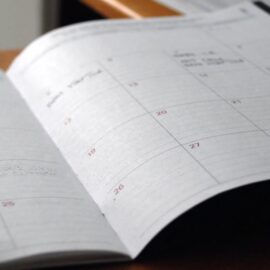

This article is an excerpt from the Shortform book guide to "Deep Work" by Cal Newport. Shortform has the world's best summaries and analyses of books you should be reading.
Like this article? Sign up for a free trial here .
What is deep work vs. shallow work? How can you reduce shallow work time from your schedule?
“Deep work” is focused, uninterrupted, undistracted work on a task that pushes your cognitive abilities to their limit. In contrast, “shallow work” describes tasks that aren’t cognitively demanding – like answering email, filling out paperwork, and attending unproductive meetings.
Keep reading to learn how you can take steps to reduce your time spent on shallow work.
Cut Out Shallow Work
When thinking about deep work vs. shallow work, you have to learn to cut out shallow work. Even if you learn how to engage in deep work, your schedule might still be inundated with shallow work. Eliminating shallow work from your work requirements will let you spend more time in deep work.
Constrain Your Work Time Each Day and Week
If you’re ambitious and aiming to be productive, you may be tempted to work endless hours each day and week, without much test.
The pitfall to this mindset is that you can’t spend all those hours on very productive tasks. The most important work is done during deep work, but your capacity is capped at 4 hours per day – and for beginners, even less time.
This means the marginal hour you spend after deep work is necessarily shallower work. You can always find more tasks to fill your time with – work expands to fill your time capacity. This doesn’t mean those extra tasks are important.
The 80/20 Rule
By the 80-20 rule, you might still achieve most of your daily potential output even if you constrain your work time per day. You might ask yourself, “if I could only work 4 hours a day, how much could I get done? If I added 2 more hours to this, how much more could I get done? Are these extra tasks important?”
On the other hand, confining your workday will make you happier – you’ll have more time to relax, and you’ll spend less time on unimportant shallow work.
So set a stopping point for each day when you’ll start your shutdown ritual. Then work backwards to figure out productivity strategies to get stuff done.
- This will effectively set a deadline for yourself. If you work only 8 hours a day, you have no choice but to get all the important things done.
- This will also push frivolities out of the way, and you’ll realize unimportant tasks have a way of taking care of themselves.
(Business software company Basecamp took this to the extreme by having only 4 workdays during the summer, and allowing a hackathon month where people were free to work on their own projects. “How can we afford to put our business on hold for a month to mess around with new ideas? How can we afford not to?”)
Plan Out Every Minute of Your Day, and Quantify Depth
Now within your fixed workday, plan out your entire day in half-hour blocks.
Rationale: When you plan out what you’ll work on in advance, you’ll have a specific goal that will reduce switching to other tasks. You also carve out time for focus, which will train your mental muscles for focus.
First, plan your schedule in half-hour blocks:
- Per your shutdown procedure, you ideally already know what you should be working on the day before.
- Schedule some overrun blocks for tasks you suspect might run over, and buffer blocks to handle emergencies that arise.
- As suggested above, schedule time in advance for when you’ll use the Internet. Avoid it completely outside these times.
Then, for each task:
- Estimate the amount of time each task should take. Be realistic so you don’t break the time deadline significantly, but also give yourself time pressure so you have to work intensely.
- Estimate the “deep work” complexity of the task. As a rule of thumb, imagine how long it would take to train a smart college grad to do the task – the more time, the deeper the work.
- Example: Executing an operational task like an analytics report may just take a week for the grad to learn. In contrast, researching the industry to find a new customer need may take months or years for a grad to get up to your ability on.
- (Shortform caveat: This heuristic doesn’t always work if you’ve built up a skill so strongly that it becomes routine. For instance, a surgeon operating may not consider a procedure deep work.)
- Look over your schedule. If your task is full of shallow tasks, consider how you can replace those with deeper work.
- How much of your schedule should be shallow work? The book suggests a guideline of 30-50% to start. Certainly it shouldn’t be the majority of your time, but in most careers you can’t get away with lower.
- For beginners to deep work, it’s not surprising for an 8-hour workday to have only 1 hour of real deep work.
To wrap up the day:
- If time runs out on a task but you have momentum and inspiration, then keep going. After you finish, restructure your day by moving blocks around.
- This addresses the complaint that too much structure decreases serendipity. And in reality, structuring time to get into deep work should increase the quantity of good ideas.
- After each day, review the accuracy of your time blocks. This will help you set more accurate days in the future.
Set a Budget with Your Boss for Shallow Work
A common barrier to getting more deep work in is the fear that your employer has expectations requiring shallow work (eg email response times).
So have a conversation with your boss about your schedule.
- Start with the high-level goal – the deep work components of your time generate the most value for the company. Does the boss agree? It’s important that deep work not be seen as an indulgent luxury, but rather as the best place to spend time.
- Does it make sense to restructure your time to focus on deep work?
- What are the expectations around shallow work (chats, emails, meetings)? Can you restructure your time to minimize those while still servicing the rest of the team?
Once people know that you’ll be spending more of your time in deep work, they’ll adjust their expectations in kind.
Learn to Say No to Shallow Work
You’ll be invited/coerced into doing work that is shallow – meetings, committees, travel.
Say no to these things by providing a vague enough response that the requester cannot work around it. Example: “Sounds interesting, but I can’t make it because of schedule conflicts.”
You might feel bad, but avoid giving a consolation prize, like “I can’t join the committee, but I’m happy to look at requests as they come along.” This just inserts more shallow work that you don’t want to do anyway.

———End of Preview———
Like what you just read? Read the rest of the world's best book summary and analysis of Cal Newport's "Deep Work" at Shortform .
Here's what you'll find in our full Deep Work summary :
- How deep work is critical for performance and productivity
- Why focus is like a mental muscle
- Why willpower isn't as good as a ritual






